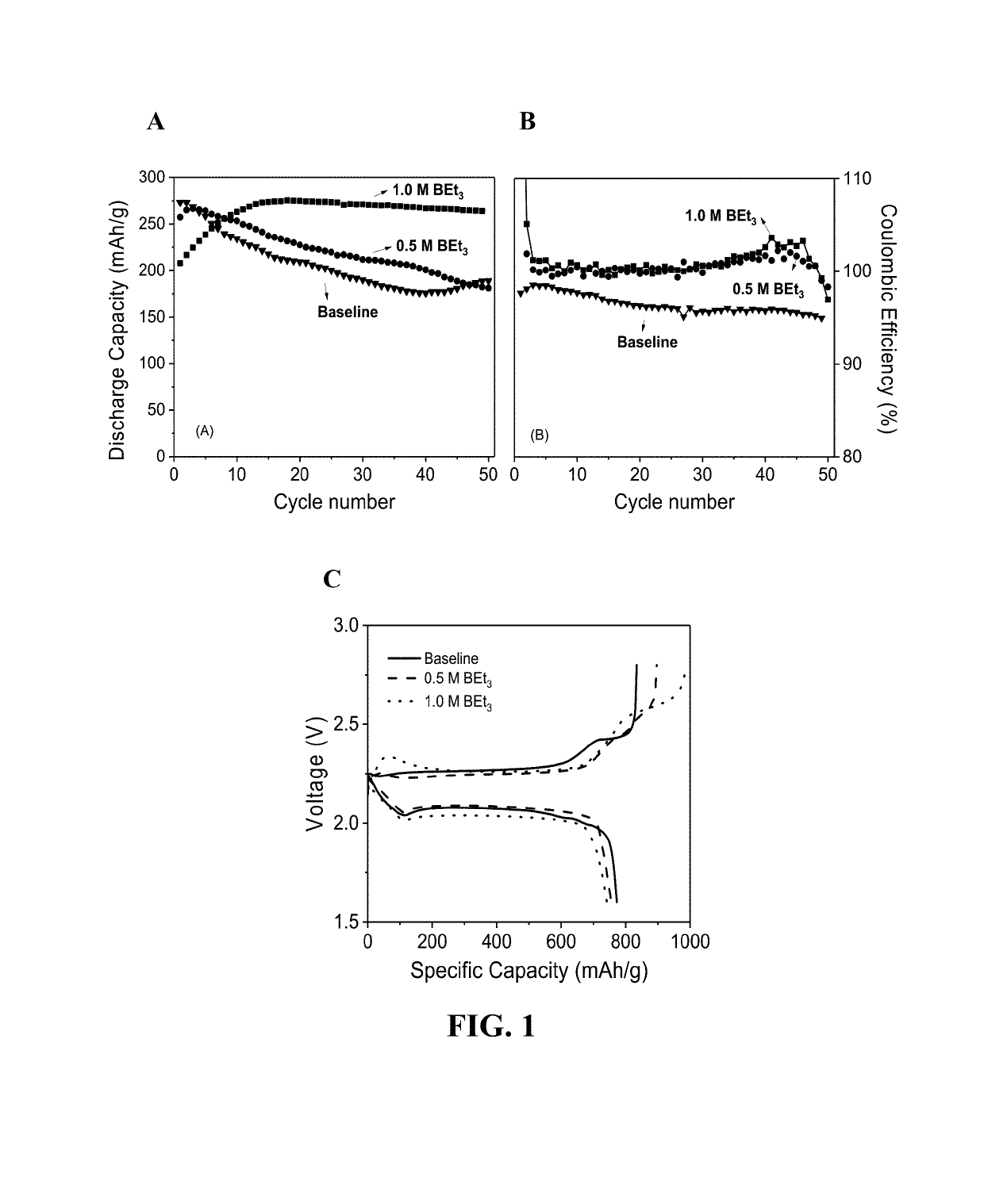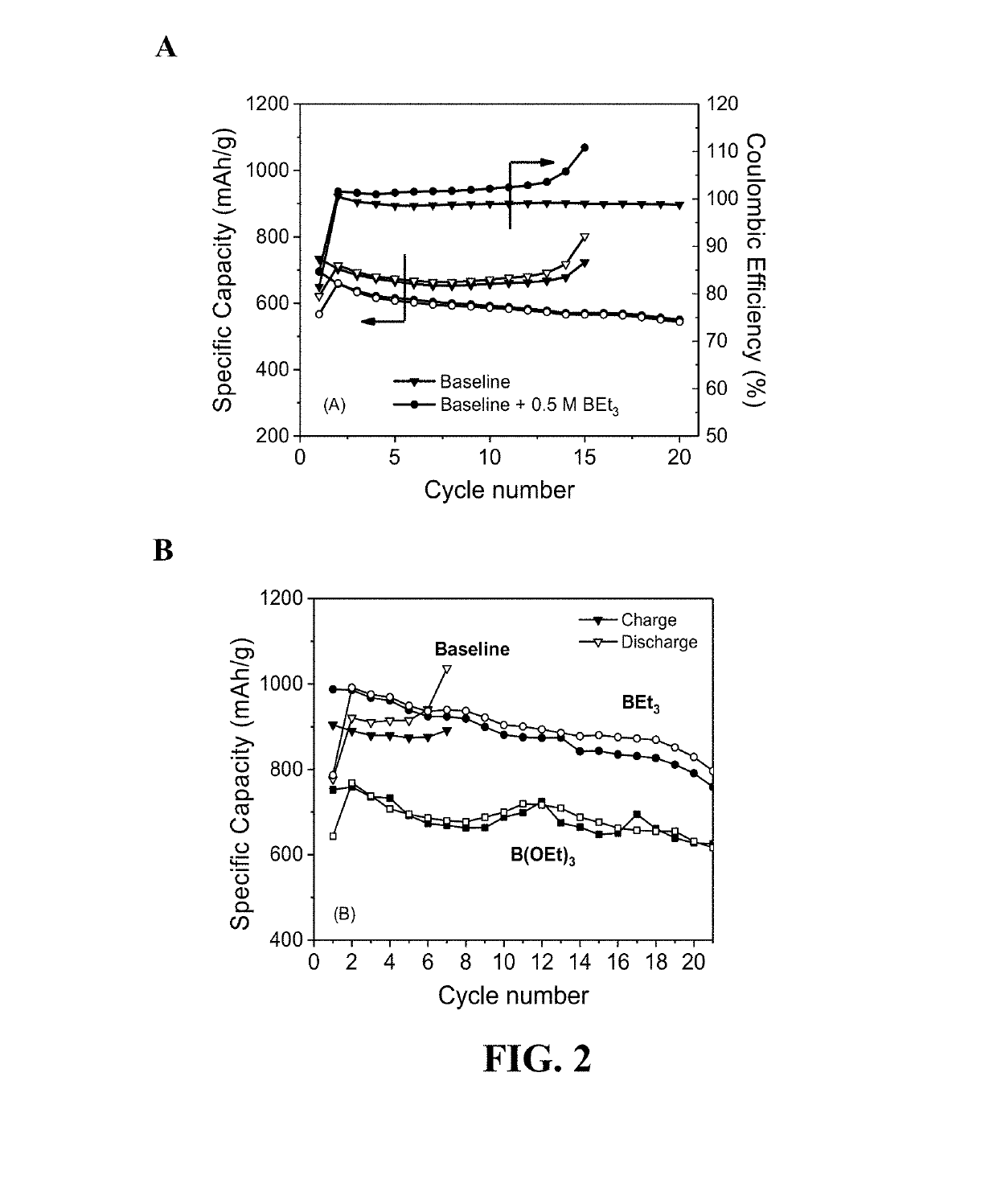Lithium-sulfur battery with lithium polysulfide catholyte
a lithium polysulfide catholyte, lithium-sulfide technology, applied in the direction of cell components, electrochemical generators, cell component details, etc., can solve the problems of capacity fading, loss of active material, material and active material loss, etc., to prolong the cycle life, high capacity, and high coulombic efficiency
- Summary
- Abstract
- Description
- Claims
- Application Information
AI Technical Summary
Benefits of technology
Problems solved by technology
Method used
Image
Examples
examples
Ex. 1. Catholytes and Li—S Batteries
[0044]Coin cells (2032-type) were constructed under an inert atmosphere. The cell components were stacked in the following order and sealed in a 2032 coin cell housing: a spacer, nanofiber carbon paper (1 cm2) imbibed with the liquid catholyte (about 20 μL), a ceramic (LISICON) membrane (190 μm thick), a CELGARD 3501 porous polypropylene membrane, and an anode comprising lithium metal dispersed in a nickel foam substrate. Baseline catholyte (for comparison) comprised about 4 M Li2S6 (on an elemental sulfur basis), and 0.5 M LiOTf in 1:1 (w / w) DOL:DME. Two exemplary catholytes according to the present invention were tested, which were comprised of the baseline catholyte containing 1.0 M B(OEt)3, 0.5M BEt3, or 1.0 M BEt3 as the anion receptor. The catholyte solutions were prepared by dissolving the lithium polysulfide (LiPS), lithium triflate and the anion receptor (when present) in the DOL / DME (1:1) solvent by heating at a temperature of about 50 t...
PUM
| Property | Measurement | Unit |
|---|---|---|
| thick | aaaaa | aaaaa |
| temperature | aaaaa | aaaaa |
| composition | aaaaa | aaaaa |
Abstract
Description
Claims
Application Information
 Login to View More
Login to View More - R&D
- Intellectual Property
- Life Sciences
- Materials
- Tech Scout
- Unparalleled Data Quality
- Higher Quality Content
- 60% Fewer Hallucinations
Browse by: Latest US Patents, China's latest patents, Technical Efficacy Thesaurus, Application Domain, Technology Topic, Popular Technical Reports.
© 2025 PatSnap. All rights reserved.Legal|Privacy policy|Modern Slavery Act Transparency Statement|Sitemap|About US| Contact US: help@patsnap.com



